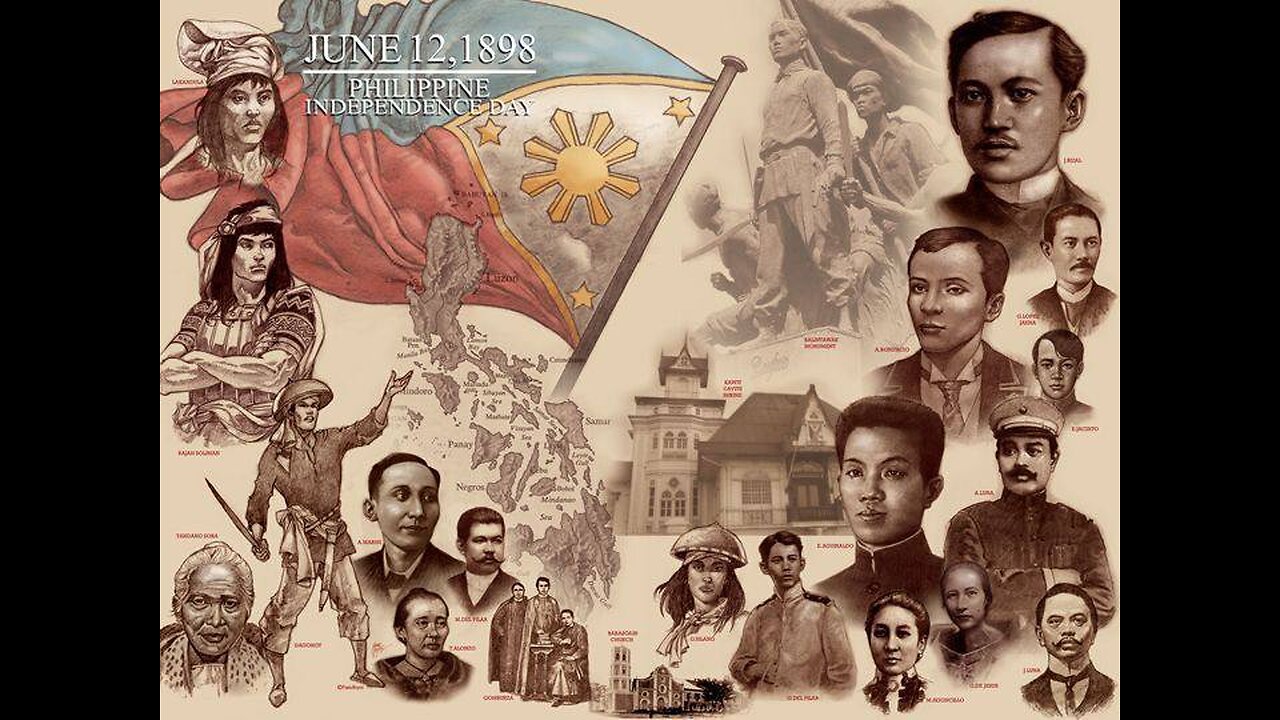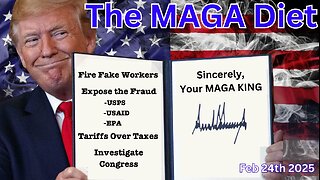Premium Only Content

HISTORY OF THE PHILLIPINES
The history of the Philippines is rich and complex, shaped by various cultures, colonization, and significant socio-political movements.
The Pre-Colonial Period
Before European contact, the archipelago was inhabited by various ethnic groups with their own distinct cultures, languages, and governance systems. Trading with other Asian regions flourished, with the islands serving as a hub for commerce.
The Spanish Colonization (1565-1898)
In 1565, Miguel López de Legazpi took possession of the Philippines for Spain, marking the beginning of over three centuries of Spanish rule. The Spanish introduced Christianity, establishing Roman Catholicism as a dominant religion. They also promoted agricultural and economic development, albeit while exploiting local resources and labor. The country saw the rise of revolts against Spanish authorities, culminating in the Philippine Revolution in 1896, spearheaded by national heroes like José Rizal and Andres Bonifacio.
The American Rule (1898-1946)
Following the Spanish-American War, the Treaty of Paris in 1898 ceded the Philippines to the United States. American governance brought about significant infrastructure development and education reform but was met with resistance, such as the Philippine-American War (1899-1902). The U.S. slowly granted more autonomy through the establishment of the Commonwealth in 1935.
The World War II and Japanese Occupation (1942-1945)
During World War II, the Philippines was occupied by Japanese forces from 1942 until 1945. This period was marked by widespread suffering, resistance efforts, and significant battles, including the infamous Bataan Death March. Liberation came with the return of General Douglas MacArthur in 1944.
The Post-War Era and Independence (1946)
On July 4, 1946, the Philippines gained independence from the United States, establishing a democratic government. However, political instability, issues of land reform, and growing communist movements challenged the new state.
The Martial Law and People's Revolution (1972-1986)
In 1972, President Ferdinand Marcos declared Martial Law, extending his rule through authoritarian means. Despite economic growth, political repression and human rights abuses led to widespread dissent. The People Power Revolution in 1986 resulted in Marcos’ ousting and the restoration of democracy under Corazon Aquino.
The Contemporary Era (1986-Present)
Since the 1986 revolution, the Philippines has experienced a mix of democratic growth and political turmoil. Economic reforms have improved certain sectors, though poverty, inequality, and governance issues persist. The country faces modern challenges including OFW (Overseas Filipino Workers) concerns, insurgencies, and ongoing environmental issues, while working to assert its sovereignty in the face of regional geopolitics, especially with China's rising prominence in the South China Sea.
The Philippines today is celebrated for its diverse culture, vibrant democracy, and resilience amidst historical adversities.
-
 LIVE
LIVE
Steven Crowder
4 hours ago🔴 Trump Drops a Bombshell: Bongino’s FBI Takeover & Crowder in Germany Exclusive
46,810 watching -
 DVR
DVR
LFA TV
22 hours agoTIME FOR PAYBACK! | LIVE FROM AMERICA 2.24.25 11AM
83.2K5 -
![🔴[LIVE TRADING] Bounce or Bust?! || The MK Show](https://1a-1791.com/video/fwe2/ad/s8/1/c/n/q/f/cnqfy.0kob-small-The-MK-Show-Feb.-24th.jpg) DVR
DVR
Matt Kohrs
15 hours ago🔴[LIVE TRADING] Bounce or Bust?! || The MK Show
34.4K2 -
 1:03:25
1:03:25
Kyle Fortch
4 hours ago $0.68 earnedRick Barker: Managing & Developing Taylor Swift, Breaking Artists Today & MORE | THE ONE SHEET S1E5
61.1K -
 37:11
37:11
BonginoReport
6 hours agoDan Bongino is Leaving (Ep.146) - 02/24/2025
225K450 -

Wendy Bell Radio
7 hours agoThe MAGA Diet
165K48 -
 1:22:03
1:22:03
Graham Allen
5 hours agoGRAHAM MAKES YUGE ANNOUNCEMENT!! + LIBERAL REP ROOTING AGAINST AMERICA?!
98.9K51 -
 1:01:28
1:01:28
Randi Hipper
3 hours agoETHEREUM PRICE BOUNCES AFTER BILLION DOLLAR HACK!
33.4K1 -
![Massive Paradigm Shift: Bongino Hired At FBI; Joy Reid Fired At MSBNC [EP 4450-8AM]](https://1a-1791.com/video/fwe1/52/s8/1/u/2/_/e/u2_ey.0kob-small-Massive-Paradigm-Shift-Bong.jpg) 3:54:43
3:54:43
The Pete Santilli Show
18 hours agoMassive Paradigm Shift: Bongino Hired At FBI; Joy Reid Fired At MSBNC [EP 4450-8AM]
141K18 -
 1:27:17
1:27:17
Game On!
16 hours ago $3.13 earnedAnother Monday without football...
68.5K8